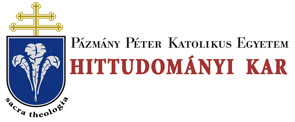Folia Canonica 10. (2007)
PROCEEDINGS OF THE INTERNATIONAL CONFERENCE - Szabolcs Anzelm Szuromi: Development of the Clerical Duties and Rights Based on the 11th-12th Centuries. Canonical Collections
216 SZABOLCS ANZELM SZUROMI Gratian distributes into different sections the canonical material about clerics. In the first section of his work we find some rules concerning the licit ordination for the different degrees of the Holy Order (cf. D. 69 c. I59; D. 78 cc. 1-560). The importance of the canonical obedience for clerics, especially bishops and priests can be read in D. 23 c. 3,6. D. 91 c 2 prescribes the praying of the Liturgy of the Hours in accordance with the liturgical books for the maior clerical orders. Among the clerical virtues is towered about others the chastity, which marked by the word “celibacy”. The church demands perfect unselfishness and selfsacrifice from her priests. The priestly life has to offered exclusively for the salvation of the faithful and the clerical vocation. This can be a short summary of D. 27 c. 8; D. 28 cc. 2,8, 9; D. 33 c. 7; D. 81 c. 19 and many other canons. The clerical habit and its wearing, moreover the tonsure are indicated also several times, e.g. D. 33 c. 22, 32; D. 41 c. 8. There are other norms required for clerics to observe in general behavior, such as in their dress, eating and customs (D. 34 cc. 1-3; D. 35 c. 1; D. 44 cc. 2-4, 7). The second section speaks in general about clerical duties and rights in a particular questio, namely in C. 12 (q. 1 ). This is a canon prescribes the community life for clerics based on a Pseudo-Isidorian text, attributed to Pope Clement I (887-97?) [c. 2]61, but there are also similar canons by Urban I (222-230) and St. Augustine (cc. 9-10).62 Canon 18 indicates that the priest does not lead his parish as his own property, therefore he cannot leave his purchase to his relatives.63 The same contents is found in c. 24 citing the Apostolic canons (c. 41).64 Moreover, we can read in canon 23 — based on Council of Antioch (a. 341), that the diocesan 59 D. 69 c. 1: Quoniam uidemus multos sine manus inpositione a paruula etate tonsuram clerici accipientes, nondumque ab episcopo manus inpositione precepta super ambonem irre- gulariter in collecta legentes, precipimus amodo id minime fieri. Id ipsum quoque conseruan- dum est etiam inter monachos. §. 1. Lectoris autem manus inpositione licentia est unicuique abbati solummodo in proprio monasterio faciendi, si dumtaxat eidem abbati manus inpositio facta noscatur ab episcopo secundum morem preficiendorum abbatum, dum constet illum presbiterum esse. §. 2. Simili modo secundum antiquam consuetudinem corepiscopum pre- ceptione oportet episcopi promouere lectores. Friedberg 1.256. 60 D. 78 c. 2: Nemo resbiter consecretur, qui minor triginta annis sit; nemo decanus uel sub- diaconus fiat, qui minor uigintiquinque annis sit; nemo lectoribus connumeretur, qui minor decem et octo annis fuerit; nemo inter diaconissas consecretur sacrosanctae ecclesiae, que minor sit quadraginta annis, uel ad secundum matrimonium peruenerit. Friedberg I. 275. 61 C. 12 q. 1 c. 2, Friedberg I. 676-677. 62 C. 12 q. 1 cc. 9-10, Friedberg I. 679-680. 63 Friedberg I. 683. 64 C. 12 q. 1 c. 24: Precipimus, ut in potestate sua ecclesiae res episcopus habeat. Si enim animae hominum preciosae illi sunt creditae, multo magis oportet eum curam de pecuniis agere, ita ut potestate eius indigentibus omnia dispensentur per presbiteros et diacones, et cum timore et omni sollicitudine ministrentur. Ex his autem quibus indiget etc. Friedberg I. 685.
